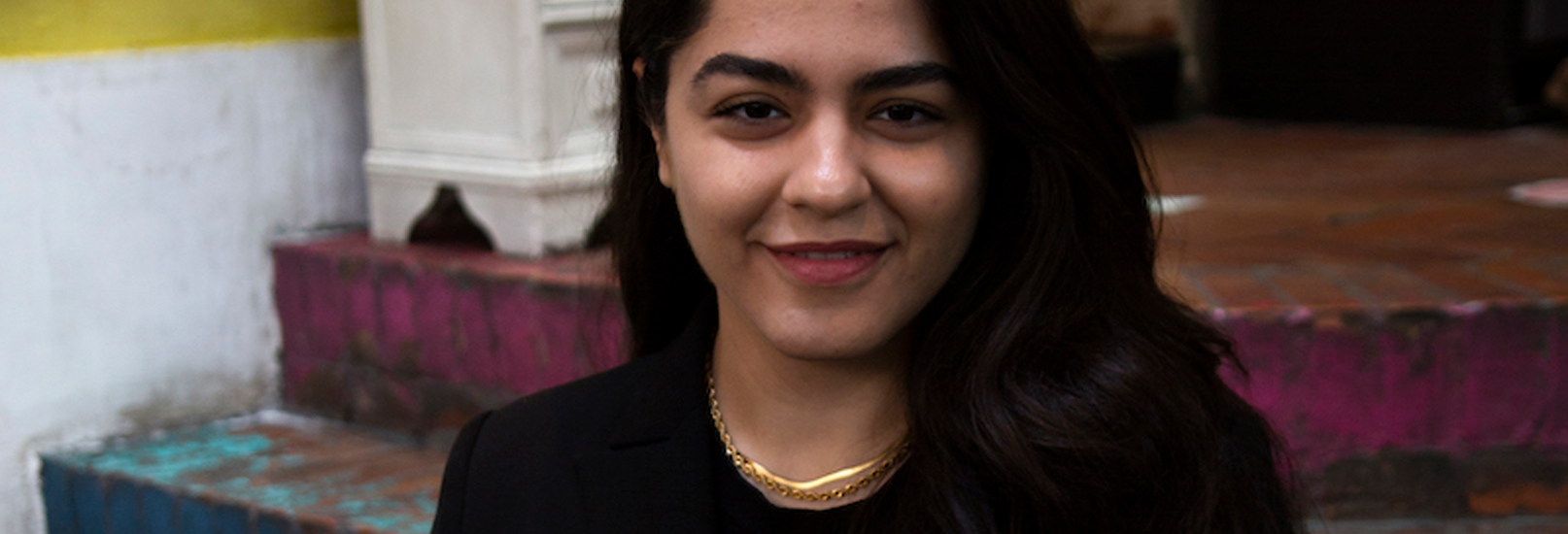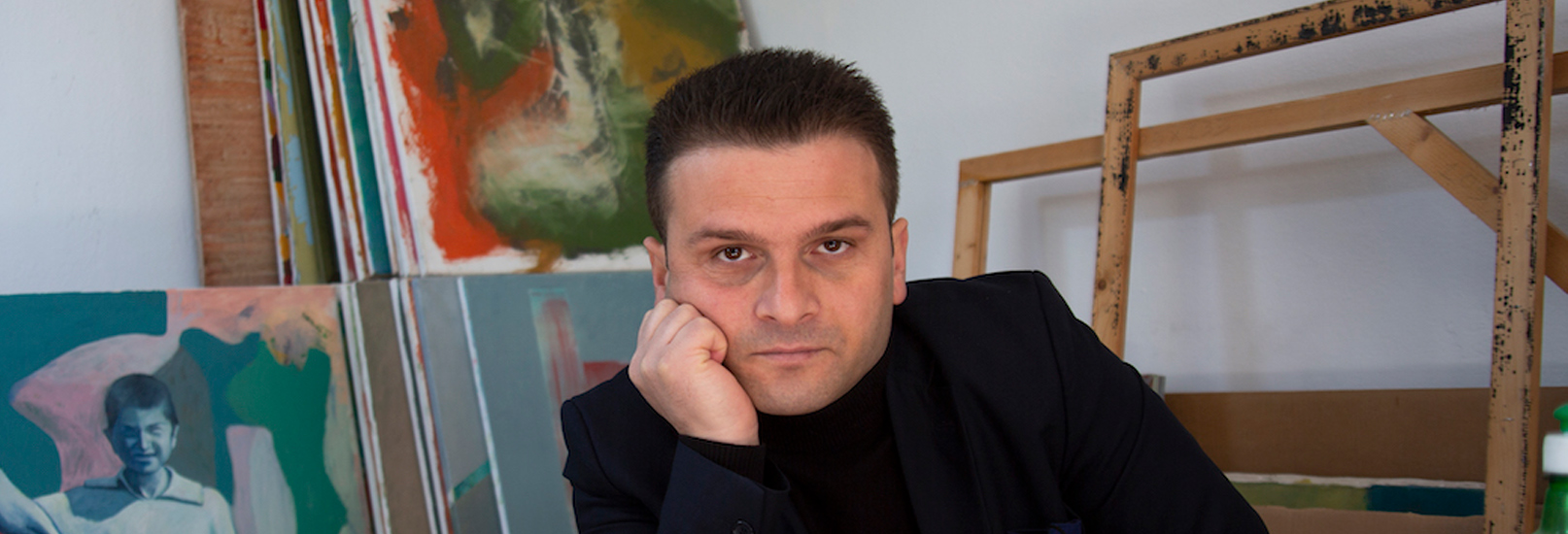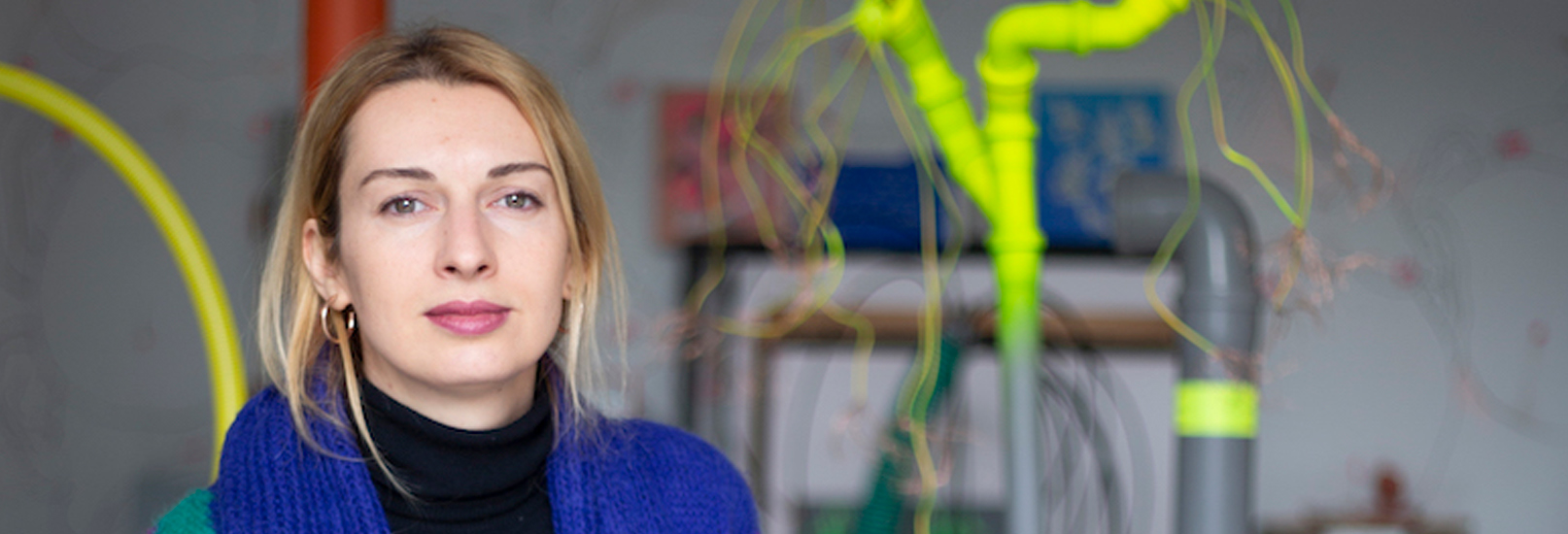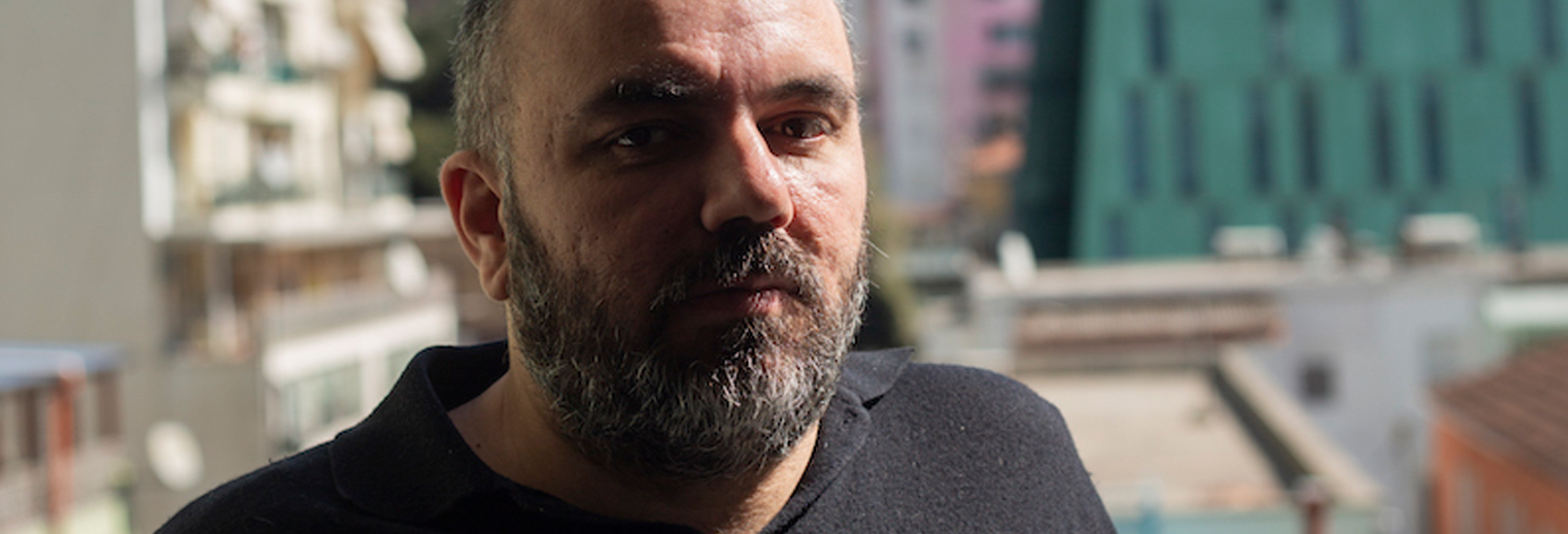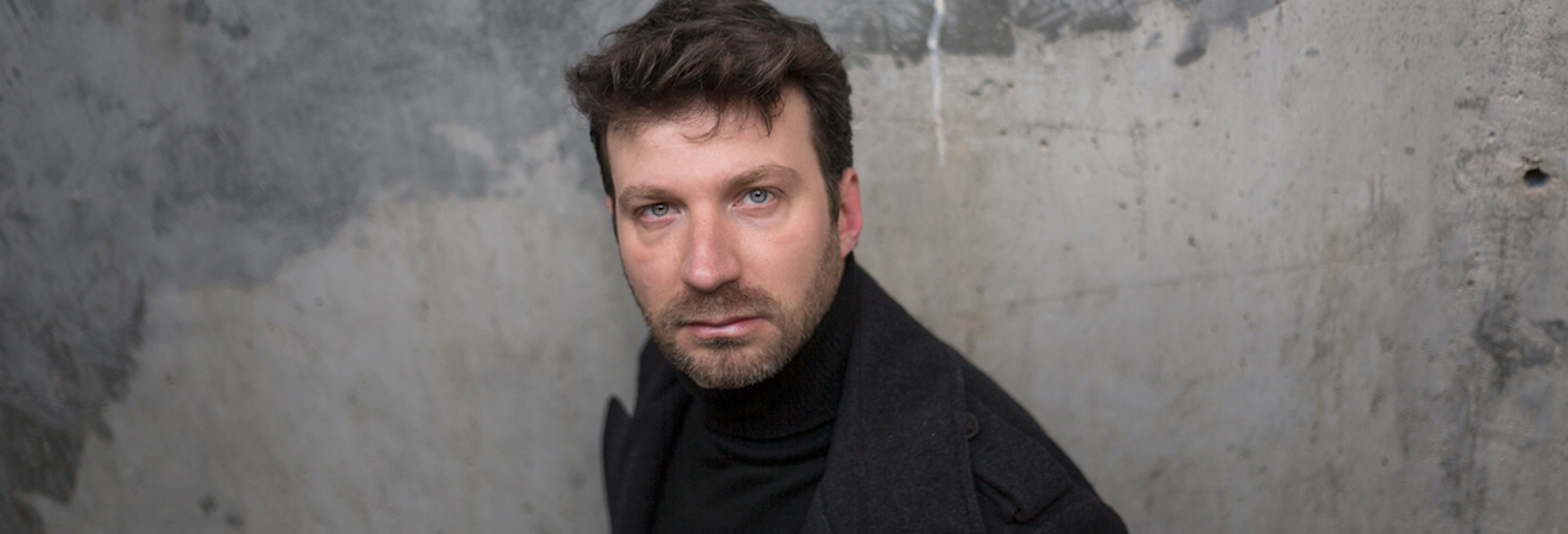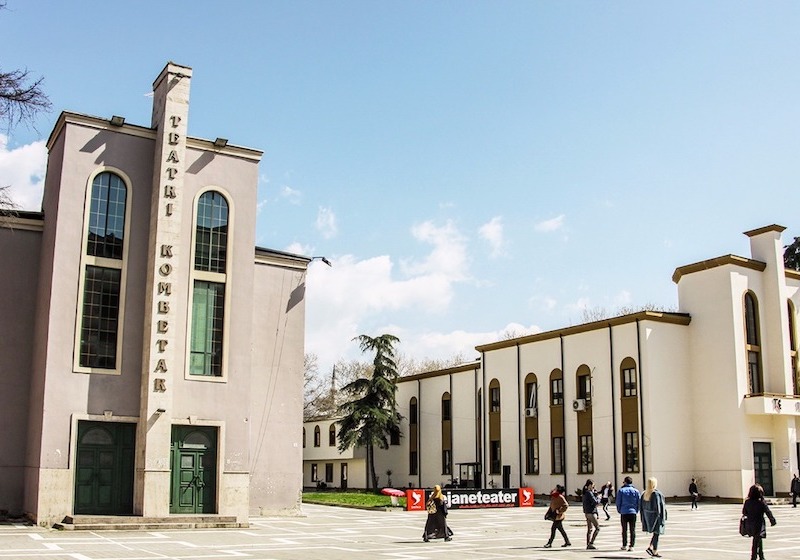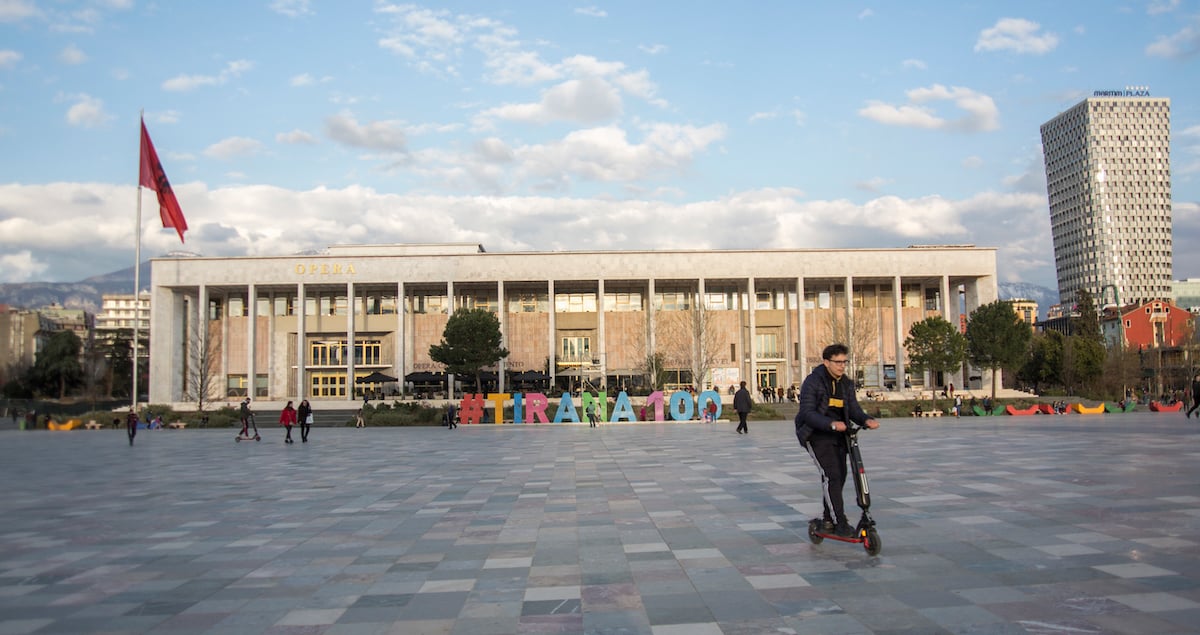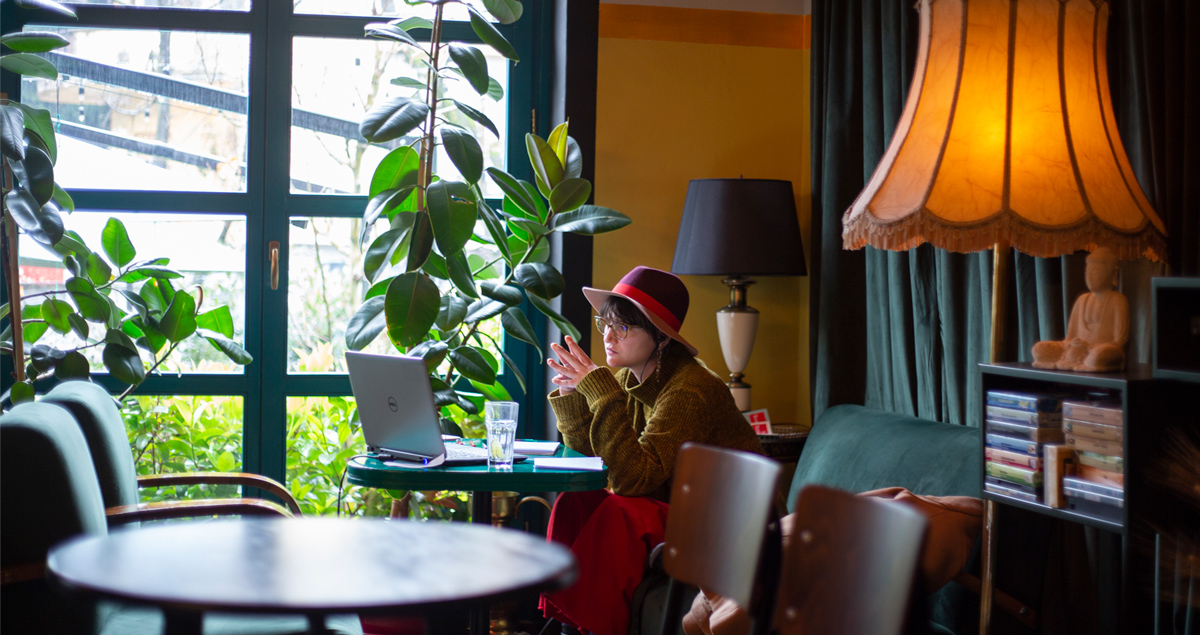6 Albanian emerging creatives are reshaping Tirana’s contemporary culture
Creative cities: Tirana
This article was produced by The Calvert Journal in partnership with British Council
Tirana’s emerging generation of creators are unafraid of pushing boundaries, whether that is embracing new formats, breaking old prejudices, or reinventing the canvas of the world around them. Most of all, they are dedicated to their own unique vision, each fighting to realise creativity on their own terms.
Xhoana Kristo is an architect and urban designer focused on the relationship between light, senses, and architectural space. She has been involved in several architectural practices, and lectures at Tirana’s Polis University while studying for her PhD. But she is also keen to engage ordinary Albanians in the city’s rich urban spaces.
Working together with architect Dr. Vera Bushati, Kristo made ArchiGames, a platform hosting interactive educational games related to architecture, urban planning, art, design, and cultural heritage. “[It has] the vision and aim to transform the process of learning into play, inviting people of all ages, from ordinary citizens to professionals,” she says.
Tirana is a city that is changing, and those transitions are happening very fast
Many of the games seem deceptively simple. The first was a card-matching game which challenged players to match Albanian landmarks with their rich histories. But with Tirana undergoing large-scale redevelopment, there has perhaps never been a more important time for members of the public to engage with the spaces that surround them. “Tirana is a city that is changing, and those transitions are happening very fast,” says Kristo.
To bring in new ideas and new audiences, new creative approaches are needed — which Kristo and Tirana’s young creatives hope to provide. “As an educator, I believe it’s important to inspire the young generation in order to continuously grow and evolve,” she says. “Our models of education are no longer top-down but also bottom-up, as students learn from teachers, and teachers learn from their students and their evolving needs. Even established professionals can learn from young creative minds that innovate and push forward into new disciplines and trends.”
Few subjects are beyond the reach of The Dordolet’s Podcast, with episodes that range from media and mental health to the environment and toxic masculinity. Created by Dorela Lazaj, it hopes to foster democracy and freedom of speech in Albania by spotlighting alternative voices and “dissecting Albanian reality”.
“I started interviewing my colleagues who worked within civil society because I felt that the traditional media was presenting an image of the social reality that was far from our everyday lives,” says Lazaj. “The activists and activism in Albania rarely features in the media, and therefore the public is not informed of the alternative platforms that young people are making. I wanted to create a space of discussion within civil society, and I wanted activists to rely on a channel that is uncensored, transparent, and on their side.”
Podcasting remains nascent in Albania today, and Lazaj uploads all of her episodes on YouTube to further boost its reach. While the platform itself is yet to become popular, there is a real hunger across Tirana’s creative scene for the social justice topics that the podcast covers.
One of the biggest setbacks within the Albanian mentality is that young people are discouraged from experimenting and expressing themselves
“In the 2000’s, creativity [in Albania] was linked mostly to music, and using music as a means of expression,” says Lazaj. “Now the trend is changing — more and more youth are directing themselves towards entrepreneurship, freedom of expression, or online platforms that advocate for human rights and democracy.”
But as well as pushing new platforms, Lazaj also hopes to promote a kind of engagement that is often lacking in the internet age, one where debates remain civil and constructive despite deeply-held differences of opinion. The political scene in Albania lacks civic communication, she says, but she wants young people to feel confident and able to step forward and express themselves.
“I would like to see more young people who take initiative,” she says. “One of the biggest setbacks within the Albanian mentality is that young people are discouraged from experimenting and expressing themselves. As in many post-communist countries, innovation and inquiry have not been encouraged — therefore there are a lot of people who think inside of the box. I believe we need more of the free, daring individuals.”
Sead Kazanxhiu’s art is both pertinent and inescapably political. “The central part of my creativity is being a Roma artist and digging into the roots of my identity, history, and culture, to understand more about who I am,” says the 33-year-old. “Most of my artistic research is comparing what we, as Roma, face in our day-to-day life, with different historical contexts.”
This journey has led Kazanxhiu to probe many different areas of Albanian life. His 2014 piece Shtepizeza saw the artist create 2500 model houses from concrete before dumping them in front of the Prime Minister’s office, shedding light on thousands of forced evictions against Romani families. One 2017 intervention, I Don’t Have Borders to Protect, wrote out the pleas of Romani parents who did not want their children to be forced into conflict during the Yugoslav Wars in golden balloons. Meanwhile, 2020’s Majlinda saw artwork painting directly onto a modified motorcycle in solidarity with rag-and-bone men who had their vehicles blocked by local police — challenging officials’ views on those working with “waste goods”.
The idea of offering an artist fee for the artist in Albania is almost unheard of. Exhibiting an artist’s work is seen as doing them a favour; when you compare us to musicians, visual artists are quite hard done by in that regard
Kazanxhiu draws strength not only in aesthetics behind his work, but also in the concrete social and political issues that they challenge. Such motivation is important in Tirana, where artists often struggle to make a living from their work.
“The idea of offering an artist fee for the artist in Albania is almost unheard of. Exhibiting an artist’s work is seen as doing them a favour; when you compare us to musicians, visual artists are quite hard done by in that regard,” he says. “An artist needs to be motivated, which means their works will be valued.”
Artist Ledia Kostandini believes that every city generates an energy related to its inhabitants, the lifestyles, and mentalities of local people, leaving their mark upon the cityscape.
“I get my inspiration from architecture forms or different urban elements that manifest social behaviour in the public space,” she says. “I like to investigate and highlight the relationship between people and architecture. My works try to unlock a certain metaphorical dimension of things and places related to their function, their history, or meaning.”
Her favourite works are outdoor interventions, when Kostandini creates art out in the streets and spaces used by everyday Albanians — stepping out of her studio and heading to villages, peripheries, and former industrial sites. Local people are often eager to help, she says, or satisfied simply by watching from before. In both cases, these bystanders become the under-layer of her projects, simply because they have shaped the places where she works.
Tirana carries many creative people who insist on artmaking without compromising the sincerity of what they do
This connection to the environment is one of the motivations keeping Kostandini in Albania, even though the local art funding is often limited. She sometimes is forced to fund her own projects, using the income she earns as an illustrator. “There’s that relationship of love and acquaintance with your country, that feeling with which you are born and coexist because even non-spiritual things turn into good friends. Over the years, I have aimed to embrace my country while exploring and understanding it,” she says.
In many ways, it is this resilience that makes Albania’s art scene so special. “Tirana carries many creative people who insist on artmaking without compromising the sincerity of what they do. This sounds like a real sacrifice. But in the end, art becomes more hectic when developed in these conditions because sometimes impossibility pushes you towards resistance and this often serves as adrenaline,” says Kostandini. “Albania is very inspiring because of its transitory nature. It floats in between its cruel past and its western aspiration. Everything around is shaped after the multilayered history. We experience clashes between different time periods and mentalities, which are definitely inspiring subjects for artists.”
Promoter, provocateur and aesthetician DJ Minimim has guided Albania’s electronic music scene from its infancy. The driving force behind cultural projects and parties across the country, including the infamous Discobox, he also hosts a weekly radio show, Plan B on the online Radio Mi.
“Tirana’s music scene is livelier now than ever,” says DJ Minimim. “In the last few years many collective musicians and DJ initiatives have been born and are growing artistically, attracting people with their art, spirit, stream, and the atmosphere they create. My favourite [artists], regardless of personal taste, are exactly these collectives — the ones who aren’t influenced by short-term commercial goals, but who follow their passion and believe in their instincts.”
Post-Covid might be a golden chance for a healthier creative environment and above all for a qualitative growth of its values
With this wealth of music talent waiting in the wings, DJ Minimim now hopes that new support networks will follow, including more cultural journalists and critics who can give the bustling scene the time it deserves. “Reviewing, analysing, and critical thinking indirectly give qualitative growth and attracts more attention towards art and culture,” he says. “Founding new platforms and organisations which can influence the public debate on art and culture might bring enormous changes.”
In the meantime, he hopes that artists themselves will take stock of the wealth of talent at their disposal, and how best to use it. “I hope this pandemic period has made everyone who is an influential factor of the so-called creative scene reflect. The re-beginning might be a golden chance for a healthier creative environment and above all for a qualitative growth of its values. More commitment, focus, consistency, and also a new mentality are needed.”
Artist Endri Dani is inspired by the objects that surround him, manipulating inconspicuous items so that they become artefacts that question cultural identity, consumer culture, and globalisation. Previous works have seen the artist reconstruct and repaint a crushed aluminium can found on the waterfront to all its capitalist glory, or souvenirs stripped of their patriotic paint to expose the factory-issue ceramics below.
Yet while much of Dani’s work engages with worldwide issues, it is inescapably rooted in the Albanian present. One work sees a traditional Albanian rug stripped of its colours, so that the viewer is forced to recreate its pattern from memory. Another features a cement mixer, the ubiquitous symbol of Tirana’s turbulent and rapidly-changing cityscape, covered in traditional Albanian designs.
By both adding to and stripping away the layers of unsaid symbolism in the world around him, Dani presents a new way of looking at both Albania and Europe as a whole — as well as our own preconceptions.
